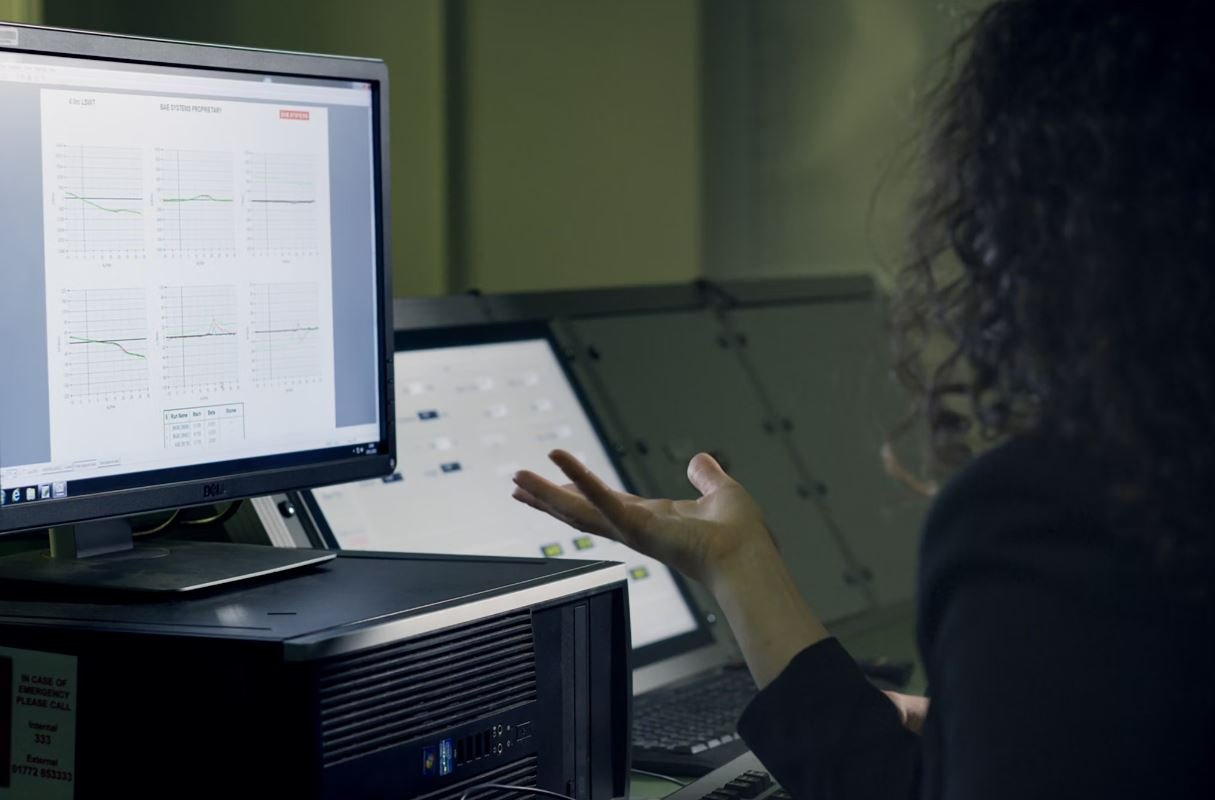Input Data Barcode Scanner
An input data barcode scanner is a device used to easily and accurately scan barcodes while inputting the data into a computer system. It eliminates the need for manual data entry, reducing errors and saving time.
Key Takeaways
- Input data barcode scanners simplify and expedite the process of data entry.
- They can connect to various devices, including computers, smartphones, and tablets.
- Barcodes improve accuracy and efficiency in retail, warehousing, and inventory management.
How Input Data Barcode Scanners Work
Input data barcode scanners use a light source and a photosensitive element to read the barcode. The light reflects off the barcode, and the photosensitive element measures the intensity of the reflected light, converting it into electrical signals. The scanner then decodes these signals into meaningful data that can be interpreted by a computer.
*Barcode scanners have different scanning technologies, such as laser, LED, or CCD, each with its own advantages and disadvantages.*
Types of Input Data Barcode Scanners
There are various types of input data barcode scanners available in the market to suit different requirements. The most common types include:
- Handheld Scanners: These are the traditional barcode scanners held with your hand. They feature a trigger button to initiate scanning.
- Pen Scanners: These compact scanners resemble a writing tool and are ideal for scanning smaller barcodes.
- Mobile Computer Scanners: These scanners combine a barcode scanner with a mobile computing device, integrating data capture and processing capabilities.
- Stationary Scanners: These scanners are fixed in a specific location, such as a checkout counter or a conveyor belt, and automatically scan barcodes passing through their field of view.
Advantages of Using Input Data Barcode Scanners
Using input data barcode scanners offers several advantages:
- Speed and Efficiency: Scanning barcodes is much faster than manual data entry, saving time and increasing productivity.
- Accuracy: Barcodes eliminate human errors that often occur during manual data entry, resulting in more accurate data.
- Inventory Control: Barcode scanners facilitate efficient inventory management, providing real-time visibility into stock levels and making it easier to track items.
- Streamlined Operations: With automated data entry, businesses can streamline their processes, reducing bottlenecks and improving overall efficiency.
Types of Barcodes
Barcodes come in different formats, suitable for diverse applications. Here are a few common types:
| Barcode Type | Description |
|---|---|
| UPC | The Universal Product Code (UPC) is widely used for retail and consumer products, identifying items and enabling price lookup. |
| QR Code | Quick Response (QR) codes store large amounts of data and can be scanned using smartphones, making them popular for advertisements and promotions. |
| Code 39 | A variable-length alphanumeric barcode suitable for logistics and inventory applications. |
Factors to Consider When Choosing an Input Data Barcode Scanner
When selecting an input data barcode scanner, consider the following factors:
- Scanning Technology: Choose a scanner with the appropriate scanning technology based on the application requirements.
- Connectivity: Ensure the scanner can connect to your computer or mobile device using the desired interface (USB, Bluetooth, etc.).
- Scanning Range: Determine the required scanning range to ensure the scanner can read barcodes from the desired distance.
- Durability: Consider the ruggedness of the scanner if it will be used in challenging environments.
How Barcode Scanners Improve Business Operations
Implementing barcode scanners can have several positive impacts on business operations:
- Increased Efficiency: Barcode scanners enable workers to complete tasks more quickly and accurately, reducing labor costs and improving overall efficiency.
- Enhanced Customer Service: Faster and accurate inventory management ensures products are readily available, leading to improved customer satisfaction.
- Better Decision Making: Access to real-time data and accurate inventory information helps businesses make informed decisions and optimize their supply chain.
Conclusion
Input data barcode scanners provide an effective and efficient way to capture and input data into computer systems. By enabling quick and accurate barcode scanning, businesses can enhance their operations, improve inventory management, and streamline processes.

Common Misconceptions
1. Barcode Scanners Only Scan Barcodes
One common misconception about barcode scanners is that they are only capable of scanning barcodes. In reality, modern barcode scanners are equipped with advanced technology that enables them to scan various types of data, including QR codes, UPC codes, and even RFID tags.
- Barcode scanners can also read information from magnetic stripes.
- They can decode and transmit information directly to a computer or a mobile device.
- Some barcode scanners can even read damaged or poorly printed barcodes thanks to their advanced imaging capabilities.
2. All Barcode Scanners are Expensive
It is a common misconception that all barcode scanners are expensive. While there are high-end barcode scanners available at a premium price, there are also affordable options that can fit within any budget.
- Entry-level barcode scanners are cost-effective and offer basic scanning functionalities.
- Many smartphones can function as barcode scanners through the use of dedicated apps.
- USB barcode scanners provide a budget-friendly option for small businesses.
3. Barcode Scanners Require Extensive Training
Another misconception is that using a barcode scanner requires extensive training. In reality, barcode scanners are designed to be user-friendly and easy to operate.
- Most barcode scanners are plug-and-play, requiring no complex setup or configuration.
- Training to use a barcode scanner typically involves learning basic scanning techniques which can be done in a matter of minutes.
- Barcode scanning applications often come with intuitive interfaces that require minimal learning curve.
4. Barcode Scanners Can Only Be Used in Retail
Many people associate barcode scanners with retail environments only. However, barcode scanners have a wide range of applications beyond retail and can be used in various industries.
- In healthcare, barcode scanners are used to track and manage patient information, medication inventory, and medical equipment.
- In logistics, barcode scanners are used to track shipments and manage inventory efficiently.
- In libraries, barcode scanners are used to streamline borrowing and returning processes.
5. Barcode Scanners Cannot Store Data
Some people believe that barcode scanners are incapable of storing data and can only transmit it to other devices. While some barcode scanners do not have built-in storage capabilities, there are models available that can store data internally.
- Data storage barcode scanners can store scanned data until it is transferred to a computer or other devices.
- This feature is useful in situations where a reliable connection with other devices may not be available.
- In certain applications, such as inventory management, the ability to temporarily store data on a barcode scanner can improve efficiency.

The following table provides an overview of the market share distribution among different barcode scanner manufacturers. The data represents the percentage of market share held by each manufacturer in the current year.
| Manufacturer | Market Share (%) |
|---|---|
| Honeywell | 25 |
| Zebra Technologies | 18 |
| Datalogic | 15 |
| Cognex | 12 |
| Hikvision | 10 |
| Toshiba | 8 |
| Motorola Solutions | 6 |
| Panasonic | 4 |
| Huawei | 2 |
The table below compares different types of barcode scanners based on their scanning technology and price range.
| Barcode Scanner Type | Scanning Technology | Price Range |
|---|---|---|
| Laser Scanners | Laser beam reflection | $100 – $500 |
| CCD Scanners | Charge-coupled device | $50 – $150 |
| Linear Imagers | Image capture | $80 – $300 |
| 2D Area Imagers | Image capture | $150 – $700 |
In the current market, barcode scanners vary in terms of features offered and their corresponding prices. The table below provides an analysis of five popular barcode scanners based on their features and prices.
| Barcode Scanner | Price ($) – Entry Level | Connectivity | Scan Range (in) | Weight (oz) | Operating System Compatibility |
|---|---|---|---|---|---|
| Honeywell Voyager 1202g | 150 | Wireless (Bluetooth) | Up to 30 | 6.3 | Windows, Android, iOS |
| Zebra DS2208 | 100 | Wired (USB) | Up to 13 | 5.5 | Windows, Android, iOS |
| Datalogic Gryphon GD4132 | 120 | Wired (USB) | Up to 23 | 7.6 | Windows, Android, iOS |
| Cognex DataMan 50L | 200 | Wired (USB) | Up to 8 | 6.1 | Windows, Android |
| Hikvision DS4108-H | 80 | Wired (USB) | Up to 13 | 5.8 | Windows, Android, iOS |
Errors during barcode scanning can cause delays and inaccuracies. The table below provides statistical data on the frequency of different types of barcode scanning errors encountered.
| Error Type | Frequency (%) |
|---|---|
| Missing barcode | 35 |
| Incorrect barcode reading | 20 |
| Barcode not recognized | 15 |
| Damaged barcode | 12 |
| Environmental interference | 8 |
| Scanner malfunction | 5 |
| Other errors | 5 |
The table below compares different barcode symbologies based on their characteristics and areas of application.
| Barcode Symbology | Character Set | Data Capacity (characters) | Application |
|---|---|---|---|
| Code 39 | Alphanumeric | 43 | Inventory, ID cards |
| Code 128 | Alphanumeric | 128 | Shipping, product labeling |
| Data Matrix | Alphanumeric | 2,000 | Electronics, healthcare |
| QR Code | Alphanumeric | 7,089 | Advertising, mobile payments |
Barcode scanners are often subjected to harsh conditions in various industries. The table below outlines their durability ratings based on industry standards.
| Barcode Scanner | IP Rating | Drop Resistance (feet) | Temperature Range (°C) |
|---|---|---|---|
| Honeywell Granit 1981i | IP65 | 10 | -30 to 50 |
| Zebra DS9908 | IP43 | 6 | -20 to 40 |
| Datalogic PowerScan PD9530 | IP65 | 8 | -20 to 50 |
| Cognex MX-1502 | IP67 | 10 | -10 to 40 |
The table below displays the sales growth of barcode scanners across different regions over the past year. The growth percentages represent the increase in sales compared to the previous year.
| Region | Sales Growth (%) |
|---|---|
| North America | 12 |
| Europe | 8 |
| Asia Pacific | 15 |
| Latin America | 6 |
| Middle East and Africa | 10 |
The table below compares barcode scanners and radio-frequency identification (RFID) technology based on their usage and key characteristics.
| Technology | Usage | Key Characteristics |
|---|---|---|
| Barcode Scanners | Item identification, inventory management | Line-of-sight scanning, cost-effective |
| RFID | Asset tracking, supply chain management | Non-line-of-sight reading, automatic data capture |
The table below provides an overview of various industries and their respective applications of barcode scanners.
| Industry | Applications |
|---|---|
| Retail | Point-of-sale, inventory management |
| Logistics | Package tracking, shipment verification |
| Healthcare | Medication administration, patient identification |
| Manufacturing | Quality control, product traceability |
| Transportation | Ticketing, asset management |
The table below compares popular brands of barcode scanners based on their reputation, customer satisfaction, and price range.
| Brand | Reputation | Customer Satisfaction | Price Range |
|---|---|---|---|
| Honeywell | Excellent | High | $100 – $500 |
| Zebra Technologies | Good | High | $80 – $400 |
| Datalogic | Good | Medium | $60 – $300 |
| Cognex | Excellent | High | $150 – $600 |
Article Conclusion
In this article, we explored various aspects of barcode scanners, including market share distribution, types, features and prices, common errors, symbologies, durability, sales growth, usage comparison with RFID, industry applications, and brand comparison. Barcode scanners play a vital role in numerous industries, enabling efficient inventory management, accurate tracking, and streamlined operations. Understanding the different aspects and options available in the barcode scanner market helps businesses make informed decisions when selecting the most suitable solution for their specific requirements.
Frequently Asked Questions
How does an input data barcode scanner work?
An input data barcode scanner works by using a laser or camera to scan the barcode image and convert it into a readable format. The scanner sends the decoded data to a connected device, such as a computer or mobile device, which then processes the information.
What types of barcodes can an input data barcode scanner read?
An input data barcode scanner can read various types of barcodes, including UPC (Universal Product Code), EAN (International Article Number), QR Code, Code 39, Code 128, and many others. The scanner’s capabilities may vary depending on the model and manufacturer.
Can an input data barcode scanner scan damaged or poorly printed barcodes?
Yes, some input data barcode scanners are designed to scan damaged or poorly printed barcodes. These scanners utilize advanced algorithms and image processing techniques to enhance the readability of the barcode even in challenging conditions.
Does an input data barcode scanner require special software to work?
Most input data barcode scanners do not require any special software to function. They can be used as a plug-and-play device, compatible with various operating systems, such as Windows, macOS, Android, and iOS. However, some scanners may come with optional software for advanced features or configuration.
Can an input data barcode scanner be used wirelessly?
Yes, many input data barcode scanners now offer wireless connectivity options, such as Bluetooth or Wi-Fi. This allows the scanner to be used without the constraint of cables, providing more flexibility in scanning barcodes in different environments.
What are the applications of an input data barcode scanner?
An input data barcode scanner has a wide range of applications across various industries. It is commonly used in retail for inventory management, point-of-sale systems, and product tracking. It is also used in healthcare for patient identification, medication verification, and asset tracking. Additionally, barcode scanners are utilized in logistics, manufacturing, libraries, and many other sectors.
Can an input data barcode scanner read barcodes from screens?
Yes, many modern input data barcode scanners can read barcodes from screens, such as smartphones, tablets, or computer displays. They are equipped with advanced image sensors and decoding capabilities to accurately capture and interpret the barcode information.
What is the scanning range of an input data barcode scanner?
The scanning range of an input data barcode scanner depends on the specific model. Some scanners have a shorter range, typically a few inches, while others have a longer range of several feet. It is important to consider the scanning distance requirements for your intended application when choosing a barcode scanner.
Can an input data barcode scanner store scanned data internally?
Some input data barcode scanners have the ability to store scanned data internally. This feature is particularly useful in situations where a stable wireless connection is not available, allowing users to capture and save barcode information for later retrieval.
Are there any limitations or potential issues with using an input data barcode scanner?
While input data barcode scanners offer great convenience and efficiency, there are a few potential limitations to be aware of. Scanning small or exceptionally dense barcodes may be challenging for certain scanners. Additionally, barcode quality, printing conditions, and surrounding lighting can affect the scanning accuracy. It is recommended to choose a barcode scanner that meets your specific requirements and assess any potential limitations before purchase.




